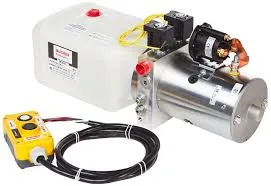Nov . 26, 2024 20:32 Back to list
How to Establish a Hydraulic Cylinder Manufacturing Facility Efficiently
Implementing a Hydraulic Cylinder Factory Key Considerations and Steps
The establishment of a hydraulic cylinder factory is a pivotal step in meeting the increasing demands of various industries, including construction, automotive, and manufacturing. Hydraulic cylinders are essential components used in machinery to create linear motion and force. This article explores the critical aspects of implementing a hydraulic cylinder factory, including planning, technology, production processes, quality control, and market strategies.
1. Planning and Feasibility Study
Before embarking on the journey of setting up a hydraulic cylinder factory, a thorough feasibility study is crucial. This phase involves market analysis to identify demand, competition, and potential customers. Assessing the geographic location is also essential as it influences logistics, accessibility to suppliers, and distribution channels. Additionally, financial planning is necessary to estimate startup costs, operational expenses, and projected revenues, which will guide funding strategies.
2. Selecting the Right Technology
The selection of technology is a key factor in the manufacturing process. Cutting-edge machinery and equipment are required to produce high-quality hydraulic cylinders. CNC (Computer Numerical Control) machines, milling machines, lathes, and welding equipment are just a few examples of the essential tools. Automation and robotics can also enhance production efficiency and reduce labor costs. It is vital to invest in technology that allows for precision, reliability, and adaptability to various production scales.
3. Design and Engineering
The design of hydraulic cylinders requires a deep understanding of engineering principles and the specific requirements of potential clients. Collaboration with engineers and designers is vital to create cylinders that are durable, efficient, and tailored to meet industry standards. Factors such as material selection, dimensions, pressure ratings, and additional features (like seals and mounts) must be meticulously considered during this phase.
The production of hydraulic cylinders involves multiple steps, including material preparation, machining, assembly, and testing. High-quality raw materials, such as carbon steel or aluminum, should be sourced from reliable suppliers. The manufacturing process typically begins with cutting the raw materials into the desired shape, followed by precision machining to achieve the exact dimensions and tolerances.
implement hydraulic cylinder factory

Assembly is another crucial stage, where various components, including the cylinder body, piston, rods, and seals, are combined. This process requires skilled labor to ensure that each part fits perfectly and operates correctly. Once assembled, the cylinders undergo rigorous testing to ensure they meet safety and performance standards. Tests may include pressure tests, leak tests, and functional tests to verify their reliability.
5. Quality Control
Implementing a robust quality control system is essential for any manufacturing facility. In a hydraulic cylinder factory, quality assurance checks at various production stages help prevent defects and ensure that the final products meet industry standards. Regular inspections, testing, and adherence to international quality certifications, such as ISO 9001, can enhance customer trust and satisfaction.
6. Marketing and Sales Strategy
Once production begins, an effective marketing and sales strategy is imperative for success. Identifying target markets and potential customers, such as construction firms, manufacturing plants, and automotive companies, is the first step. Building a strong online presence through a professional website and leveraging social media platforms can help reach a broader audience.
Participation in trade shows and industry exhibitions is also beneficial for networking and showcasing products. Additionally, establishing partnerships with distributors and suppliers can enhance market reach and visibility.
7. Sustainability Considerations
In today’s world, sustainability is a vital aspect of any manufacturing process. Implementing eco-friendly practices, such as reducing energy consumption, minimizing waste, and using recyclable materials, can not only benefit the environment but also improve the factory's reputation among consumers. Compliance with environmental regulations is essential, and promoting sustainable practices can be a unique selling point in marketing efforts.
Conclusion
Launching a hydraulic cylinder factory is a complex but rewarding endeavor, requiring careful planning and execution. By focusing on technology, design, quality control, and effective marketing, entrepreneurs can create a successful business that meets the growing demands of the industry. Emphasizing sustainability will further enhance the factory's reputation and ensure long-term viability in an increasingly eco-conscious market.
-
High-Performance Fork Lift Hydraulic Power Units
NewsAug.21,2025
-
High-Quality Set of 50/60-45-290 471 - Precision Parts
NewsAug.19,2025
-
1.5 Ton Lifting Cylinder-Hebei Shenghan|Heavy-Duty Lifting, Precision Engineering
NewsAug.18,2025
-
1.5 Ton Lifting Cylinder-Hebei Shenghan|Precision Hydraulic Solutions&Industrial Lifting
NewsAug.18,2025
-
1.5 Ton Lifting Cylinder 70/82-40-290-535 - Hebei Shenghan Hydraulic Machinery Co., Ltd.
NewsAug.18,2025
-
1.5 Ton Lifting Cylinder 70/82-40-290-535|Hebei Shenghan Hydraulic Machinery Co., Ltd.
NewsAug.18,2025
